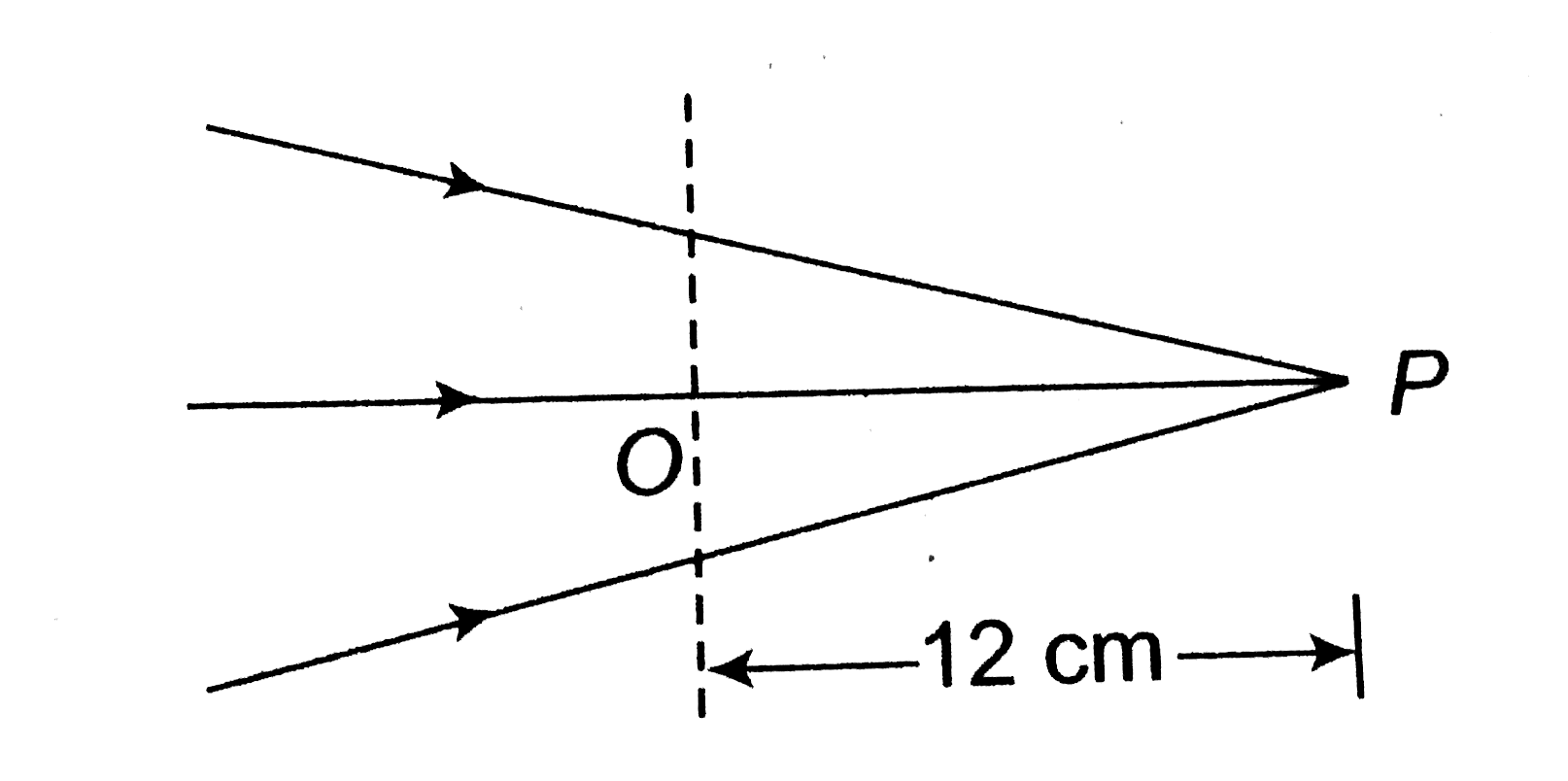Figure given below shows a beam of light converging at point When a concave lens of focal length is introduced in the path of the beam at a place shown by dotted line such that becomes the axis of the lens, the beam converges at a distance from the lens. The value will be equal to

12 cm
24 cm
36 cm
48 cm
The correct Answer is:D
u = 12 cm
f = - 16 cm
cm.

Topper's Solved these Questions
- BOOK - ERRORLESSCHAPTER - RAY OPTICSEXERCISE - NCERT BASED QUESTIONS ( Prism Theory & Dispersion of Light )46videos
RAY OPTICS
- BOOK - ERRORLESSCHAPTER - RAY OPTICSEXERCISE - NCERT BASED QUESTIONS ( Human Eye and Lens Camera )15videos
RAY OPTICS
- BOOK - ERRORLESSCHAPTER - RAY OPTICSEXERCISE - NCERT BASED QUESTIONS ( Total internal reflection )26videos
RAY OPTICS
- BOOK - ERRORLESSCHAPTER - MAGNETISMEXERCISE - Assertion and Reason22videos
MAGNETISM
- BOOK - ERRORLESSCHAPTER - WAVE OPTICS AND ELECTROMAGNETIC THEORYEXERCISE - ASSERTION & REASON27videos
WAVE OPTICS AND ELECTROMAGNETIC THEORY
Similar Questions
A beam of light converges at a point P. Now a convex lens of focal length 30 cm placed in the path of the convergent beam 12 cm from P. The point at which the beam converges now is
View SolutionA beam of light converges at a point P. A concave lens of focal length 16 cm is placed in the path of this beam 12 cm from P. Draw a ray diagram and find the location of the point at which the beam would now converge.
View Solution
Knowledge Check
- Question 1 - Select One
Figure given below shows a beam of light converging at point P. When a convex lens of focal length 16cm is introduced in the path of the beam at a place O shown by dotted line such that OP becomes the axis of the lens, the beam converges at a distance x from the lens. The value x will be equal to
 A12cmB24cmC36cmD48cm
A12cmB24cmC36cmD48cm - Question 2 - Select One
A beam of light converges at a point P. Now a concave lens of focal length -16 cm is placed in the path of the convergent beam 12 cm from P The point at which the beam converges now is
A6.86cm right side of the lensB6.86cm left side of the lensC48cm right side of the lensD48cm left side of the lens - Question 3 - Select One
A paralel beam of light incident on a concave lens of focal length 10 cm emerges as a parallel beam from a convex lens placed coaxially, the distance between the lenses being 10 cm. The focal length of the convex lens in cm is
A10B15C20D30
A beam of light converges at aoint P. Now a convex lens is placed in the path of the convergent beam at 15 cm from P. At what point does a beam converge if the convex lens has a focal length 10 cm?
View SolutionA converging beam of light is incident on a concave lens of focal length 20 cm. In the absence of the lens, the beam converges at a point 10 m behind the lens. Find where the beam will converge/diverge after refraction.
View SolutionA beam of light converges at a point P. Now a convex lens is placed in the part of the converngent beam at 15 cm from P. At what point does a beam converge if the convex lens has a focad length 10 cm ?
View SolutionA point source of light is placed at a distance of 2f from a converging lens of focal length f. The intensity on the other side of the lens is maximum at a distance
View SolutionA beam of light converges of at a point P. Now a lens is placed in the path of the convergent beam 12 cm from P. At what point does the beam converge, if the lens is (a) a convex lens of focal length 20 cm, and (b) a concave lens of focal length 16 cm?
View Solution
